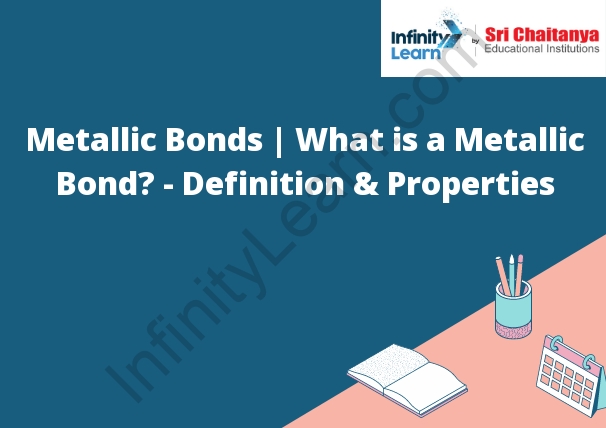Table of Contents
What is a Metallic Bond?
A metallic bond is a type of chemical bond that exists between atoms of metals. In a metallic bond, the atoms share electrons in a lattice of metal ions. The metal ions are held together by the electrons that they share, and the attraction between the metal ions holds the metal together. Metallic Bonds | What is a Metallic Bond – Definition & Properties.

Bulk Properties of Metals
Metals are good conductors of heat and electricity. They are also strong and durable. They are found in nature in the form of ores, which are rocks that contain a metal or metal compound. Ore is usually mined and then melted down to produce a pure metal.
Conductivity:
Conductivity is the ability of a material to allow an electric current through it. Materials with high conductivity allow electrons to flow freely through them, making it easy for electricity to move through them. Materials with low conductivity do not allow electrons to flow freely, making it difficult for electricity to move through them.
Malleability and Ductility:
Malleability is the ability of a material to deform permanently when subjected to a compressive force. The material will deform until the load is released and it will return to its original shape.
Ductility is the ability of a material to deform permanently when subjected to a tensile force. The material will deform until the load is released and it will return to its original shape.
Heat Capacity:
The specific heat capacity of a material is the amount of energy (in joules) needed to raise the temperature of 1 kg of the material by 1 degree Celsius.
Luster:
The luster of a mineral is its surface shine. Minerals can have different lusters depending on the composition of their surface.
Some minerals, like quartz, have a glassy luster. This means that their surface is smooth and shiny.
Other minerals, like copper, have a metallic luster. This means that their surface is shiny and has a reddish-brown color.
Metallic Bond in Molten Metal
In a molten metal, the atoms are in a liquid state and are free to move around. In this state, the atoms can form metallic bonds with each other. A metallic bond is a type of chemical bond in which the atoms share electrons. This type of bond is strong and allows the metal to conduct electricity.
Strength of Metallic Bonds
The strength of a metallic bond depends on the metal. Some metals, like aluminum, have a weaker metallic bond and are more likely to corrode. Other metals, like gold, have a very strong metallic bond and are very resistant to corrosion.
Solubility and Compound Formation of Metals
The solubility of a metal in water is determined by the metal’s electrochemical series. The electrochemical series is a ranking of metals based on their ability to lose electrons. The most reactive metals are at the top of the series and the least reactive metals are at the bottom.
The solubility of a metal in water increases as you move down the electrochemical series. This is because the more reactive metals lose their electrons more easily, which makes them more soluble in water. The least reactive metals don’t lose their.
Metallic Bonds | What is a Metallic Bond – Definition & Properties.







